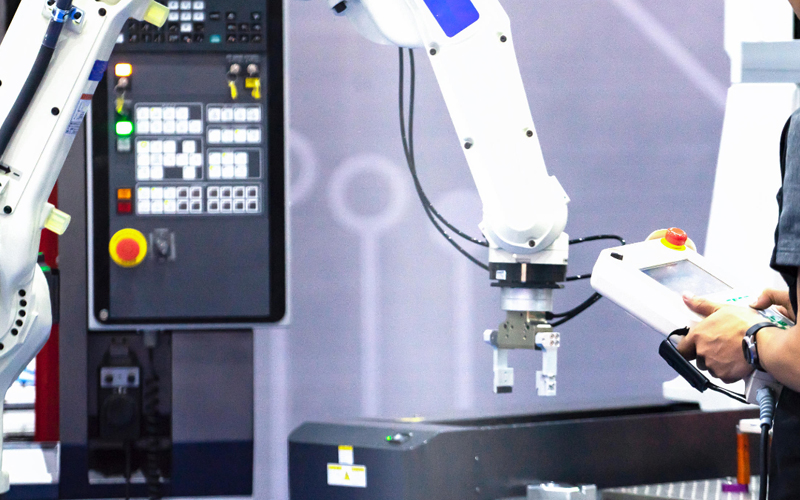In the 1950s Isaac Asimov imagined a world inhabited by robots and humans, where robots help humans in different tasks including solving murder mysteries. While we’ve not quite reached that stage of robotic development, the future is open to possibilities. While the humanoid versions we saw in movies like i-Robot are still not that common, bots accounted for more than 51% of internet traffic in 2024. The age of Robotic process automation (RPA) has definitely arrived.
RPA uses “robots” or bots to mimic human actions within digital systems. These bots can log into applications, enter data, process transactions, and communicate with other systems. The advantage? They work just like a human would but faster and without fatigue. And of course because they are not human, there are no human errors! It’s no wonder that we encounter a bot in most of the websites we visit today. After all, 19% of online businesses are currently using chatbots for customer service. 60% of B2B companies and 42% of B2C companies use chatbot software as part of their customer experience strategies.
This paradigm shift in the way we do business is because of the many benefits that RPA adoption offers even medium sized businesses. Let’s take a look at a few of them.
Bots increase productivity by virtue of the speed and scale with which they execute tasks. Processing bottlenecks are eliminated. Its ability to handle peak workloads without additional staffing allows businesses to keep resources at the most optimum level without compromising on customer satisfaction. Take Schneider Electric for example. This global leader in energy management leveraged RPA to streamline its supply chain. By automating time-consuming tasks, the company improved the efficiency of its distribution center and enabled employees to focus on higher-value activities.
Businesses can significantly cut labor costs and minimize expenses by automating manual repetitive tasks with RPA. It also reduces the need for expensive system integrations, as bots can interact with existing applications without major IT overhauls. Deutsche Bank implemented RPA in its finance department to automate repetitive tasks like data entry, validation, and reconciliation. This resulted in substantial cost savings, improved operational efficiency and enhanced data accuracy. The bank’s RPA bots work around the clock, processing large volumes of data in real-time and supporting functions like customer onboarding and compliance monitoring.
Bots follow predefined rules, ensuring consistency and reducing human error. This in turn results in improved accuracy and compliance. RPA also facilitates compliance by maintaining detailed audit trails, which are critical for industries with strict regulatory requirements.
By relieving staff from monotonous tasks, RPA boosts morale and allows employees to engage in more meaningful work. This is what Coca-Cola achieved by implementing RPA. They used RPA to automate HR audits and operations across multiple SAP systems. By deploying intelligent bots, the company automated over 50 HR processes, transitioning from an 8-hour workday to a 24-hour cycle without increasing personnel. This led to significant cost savings, improved productivity, and allowed HR staff to focus on more strategic initiatives. Retail giant Walmart deployed RPA bots to handle administrative tasks such as answering employee queries and extracting data. This widespread automation has enabled Walmart to process massive volumes of transactions efficiently, reduce errors, and enhance employee and customer experiences.
While RPA presents infinite possibilities for a business especially in enhancing customer satisfaction and productivity, implementing RPA should be approached carefully with a clear strategy in place. RPA systems often struggle to connect seamlessly with legacy software and diverse IT infrastructures, requiring extensive customization and ongoing maintenance. This can be especially daunting for organizations with outdated or fragmented systems. So take a hard look at your existing systems before implementing RPA.
It is quite possible that your current workforce will resist the implementation of RPA, primarily due to concerns about their continued relevance and job security in an increasingly automated environment. Effective communication, training, and involving staff in the transition process are essential to mitigate this resistance. So, businesses must invest in customization, integration, and employee training, making it easy for smaller enterprises to justify the initial expenditure.
Another major concern could be that of Data security. This is because RPA bots often handle sensitive information. Ensuring robust security protocols and compliance with regulations is a way to mitigate this risk.
As RPA gains more traction and gets augmented with artificial intelligence capabilities like machine learning, natural language processing, and computer vision, businesses will have to reimagine their very operating structure. This evolution, sometimes called Intelligent Automation or Hyperautomation, extends the potential applications beyond structured, rule-based processes to more complex, judgment-based activities. The Robots that Isaac Asimov imagined are on their way. They are sure to shift the very ground we stand on. Are you ready for the exciting and challenging times ahead?
How can Infosys BPM help?
Infosys BPM’s Robotic Process Automation services include solutions for enterprises seeking to transform and thrive in a rapidly changing ecosystem. We assist businesses in creating breakthrough digital solutions that enable strategic insights, business excellence, and enhanced customer experiences.







